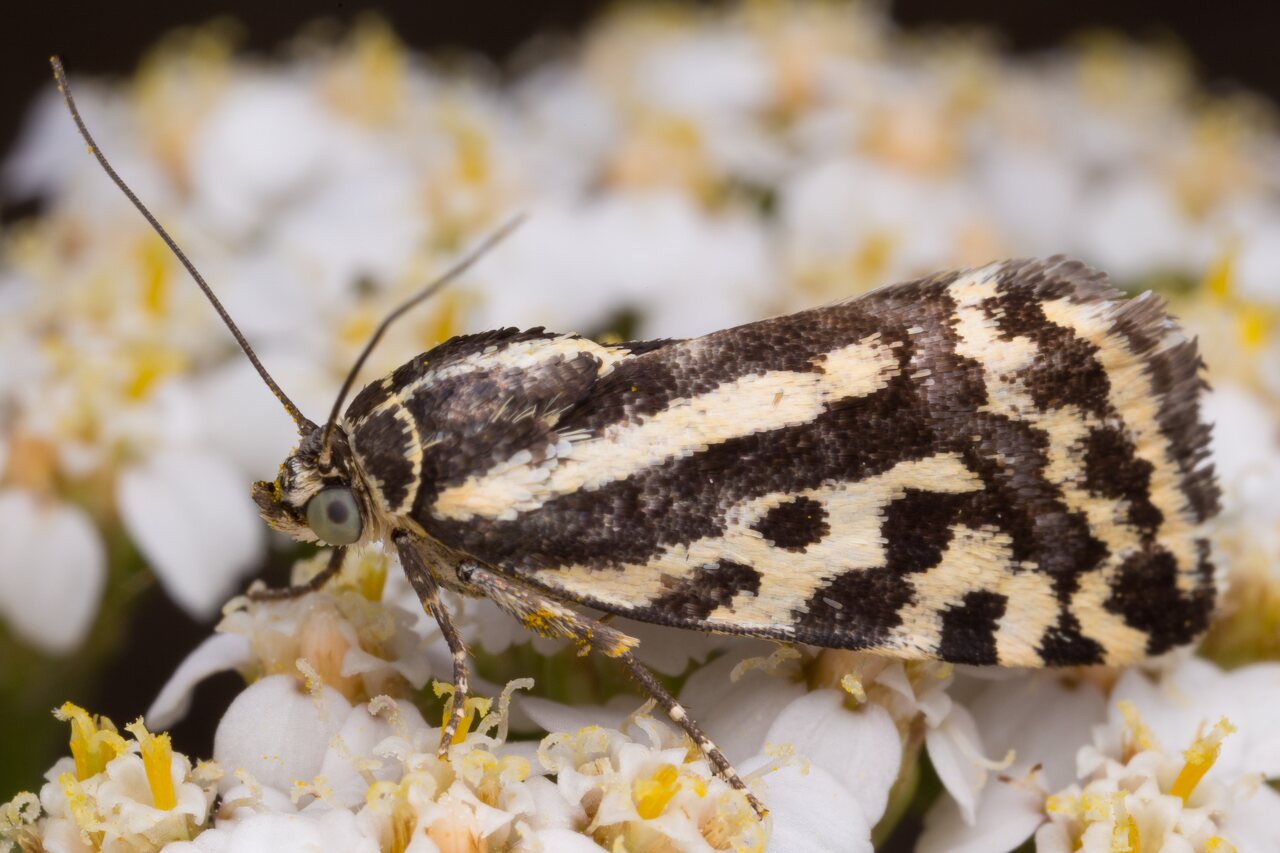
Acontia trabealis · taškuotasis pelėdgalviukas
- Emmelia trabealis, Phalaena trabealis
- spotted sulphur
- Ackerwinden-Bunteulchen, Ackerwindenflur-Bunteulchen
https://en.wikipedia.org/wiki/Emmelia_trabealis The spotted sulphur can be found in most of the Palearctic (Europe, North Africa, the Middle East and Russia to northern China and Japan). This species prefers sandy soil, dry and warm areas, meadows and sunny slopes on which the bindweed occurs. This species presents two overlapping generations a year, the second generation is generally missing in cool years. The moth flies from May to August depending on the location and then again from August to early September. The pupa overwinters. The larvae feed on field bindweed (Convolvulus arvensis) and Polygonum species.
The wingspan of Emmelia trabealis can reach 18–24 mm. The forewings show a very variable black drawings on a yellowish or dirty white background. The rear wings are reddish brown. Eggs are green, elongated and cone shaped, with a flattened base and distinct longitudinal ribs. Caterpillars are reddish to greenish brown, with dark dorsal lines and a yellow side band, the head is relatively small and brown. Cocoons are red brown or green.
‥